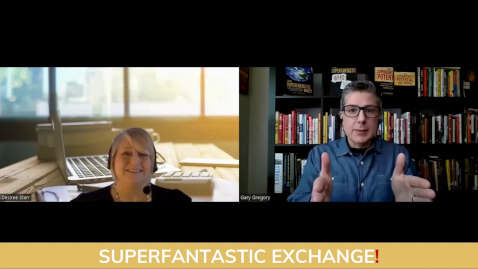Multifamily Blogs
A Secret Ingredient to Combat Employee Turnover
A Secret Ingredient to Combat Employee Turnover
46% of millennials would actually stay with an organization if they had learning and professional development as part of their culture.
That eye-opening stat was shared by Desiree Starr on Gary Gregory's SUPERFANTASTIC Exchange podcast, with Gary immediately connecting the dots by recognizing how investment into learning and professional development could create an extremely strong ROI. Employee turnover is a constant pain point in multifamily, which means this connection creates a huge opportunity.
Let's dig deeper and put numbers to this idea, but first we need to identify what we are measuring. When we think about the traditional benefits of training, we see multiple improvements in employee performance, such as:
- Enhanced efficiency and productivity
- Risk reduction
- Sales improvement
Now, let's add this additional benefit to the list:
- Employee Retention
This becomes yet another ROI-driving factor when we consider the value of training.
With that as a starting point, let's dig into the numbers.
Let's assume there exists a community with a property manager, assistant property manager, 2 leasing consultants, and 3 maintenance team members. So, 7 total employees.
In order to make a more accurate prediction of the cost of employee turnover, I reached out to Kara Rice, who shared:
According to the Swift Bunny Turnover Cost Calculator, for a 5,000 unit portfolio, with an average employee salary of $43,500, the turnover cost per employee is $27,370. Or approximately 63% of the employee's salary.
For the frequency of employee turnover, the National Apartment Association has reported that employee turnover has averaged 33%.
Combining these figures results in $63,863 in cost specifically due to employee turnover for this one community.
The tricky part is how we might apply this 46% reduction in turnover, and it probably isn't as easy as multiplying that against our turnover cost to assume our potential cost savings of $29,377 by improving our training options. That said, I think we can imagine that there is a significant chunk of that $29K that could be achieved by ensuring our employees feel they have training and professional development opportunities.
Forced Versus Employee Defined.
One other element to consider is what type of training and professional development are we talking about? By making such a giant impact on someone's decision to stay at their company, it is safe to assume that this is training that the employee actually finds valuable and they themselves see it being worth their time.
In other words, it's unlikely they are referring to the sometimes painful training forced upon team members, such as courses they struggle to stay awake for or training that they desperately want to skip through. As I mentioned in my previous blog, Property Management Company Forces Leasing Consultant to Pay for Her Own CRM, only 44% of employees are satisfied with the current opportunities for training which are provided by their company.
If we are thinking about professional development that inspires an employee to stay at their company, we are absolutely not talking about forced, painful courses, but rather training that empowers and enriches a team member, giving them agency in picking learning opportunities that they believe will give them more tools and improve their own performance.
An LMS isn't enough.
At the end of the day, if we are trying to see an ROI that results from reduced employee turnover, I firmly believe that some percentage of our training must be self-directed. I stress this because I can imagine some percent of readers today will have read that first quote and leap to the conclusion that, "Hey, we are doing great because we have an LMS." And while an LMS is a great tool, this particularly influential piece of training requires a level of emotional ownership by the team member beyond simply having courses assigned to them.
We try to enact this through our Webinar Wednesday training series, but there are loads of ways that employees can self-direct their learning to focus on their specific, personalized needs and interests. For example, having the opportunity to participate in apartment association classes.
And like I said before, when we think about cost, I don't think it is realistic to cite the full $29,000 as possible ROI for retaining an employee. However, even if it is just a fraction of that number, then it is well beyond the cost of Webinar Wednesdays, which is less than $500 for an entire on-site team for an entire year.
Conclusion
We have an incredible opportunity in front of us to impact expensive employee turnover by providing our team members with avenues to enhance their professional opportunities through training and professional development. But in order for that to achieve the goals we want, that training must be perceived as valuable by our team members, and not just additional assigned material.


